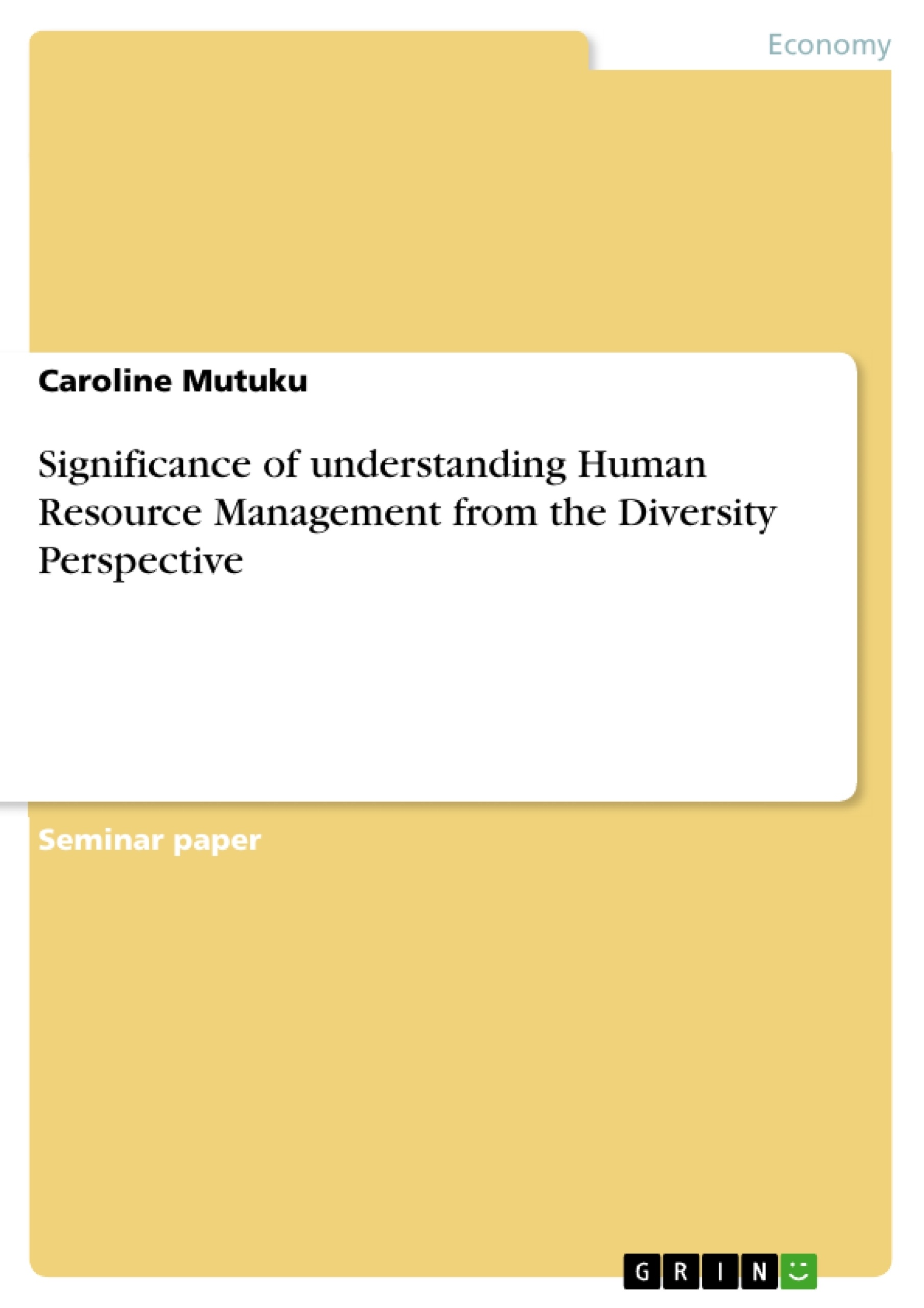For more than a hundred years, human resource management, as a practice and discipline in people management in an organization, has evolved in definition and in scope. The most popular definition of human resource management is that provided by Storey and Armstrong. The duo define human resource management as “a distinctive approach to employment management seeking to accomplish competitive advantage through strategic deployment of highly capable and committed labour using an integrated array of cultural, structural and personnel technique” (Itika 2011, p. 12). Human resource management can further be defined as a management practice and a strategic approach towards employee management in ways that would result in attainment of organizational goals, objectives and mission. According to these definitions, human resource management uses tools that attracts, motivates, develops and retains the effective function of the management of people. His may not be easy as people are workplaces are made up of several differences that are visible or invisible, through age, marital status, gender, sexual orientation, ethnicity, religion, personality and culture amongst others. Diversity in workplaces has resulted in the discriminations of certain individuals (OECD 2012). For instance, gender inequality is vice that cut across the globe, religion and ethnic segregation separates individuals in Middle East workplaces. In China, rural migrants are looked down upon by the urbanites and are mistreated in whatever kind of jobs they are allocated. Xenophobic incidences have widely been reported in South African workplaces, while the United States is blamed for racial discrimination.
Inhaltsverzeichnis (Table of Contents)
- Significance of understanding Human Resource Management from the Diversity Perspective
- Understanding Human Resource Management through Diversity
- Gender Differences
- Gender-based Human Resource Management
- Gender-based Human Resource Management Evaluation
Zielsetzung und Themenschwerpunkte (Objectives and Key Themes)
This text explores the significance of understanding human resource management from a diversity perspective, particularly focusing on gender differences and their impact on organizational effectiveness. It highlights how the integration of diversity principles into HR practices can contribute to achieving organizational goals, foster employee engagement, and promote inclusivity.
- The importance of diversity in human resource management
- The impact of gender differences on workplace dynamics
- The need for gender-conscious human resource management practices
- The role of human resource management in promoting gender equality and inclusivity
- The benefits of diversity for organizational effectiveness and performance
Zusammenfassung der Kapitel (Chapter Summaries)
- Significance of understanding Human Resource Management from the Diversity Perspective: This chapter introduces the concept of diversity in the workplace and argues for the importance of understanding human resource management from this perspective. It highlights the various dimensions of diversity, including age, gender, ethnicity, and sexual orientation, and discusses the challenges and opportunities associated with managing a diverse workforce.
- Understanding Human Resource Management through Diversity: This chapter delves deeper into the importance of diversity management, highlighting how it can lead to innovative solutions and enhanced bottom-line outcomes. It emphasizes the need for organizations to recognize and value differences within the workforce rather than viewing them as problems to be solved.
- Gender Differences: This chapter focuses on gender differences in the workplace, discussing the challenges of gender asymmetry and the impact of traditional patriarchal structures on organizational potential. It highlights the need for human resource managers to understand and address gender-based stereotypes that hinder the full realization of women's potential.
- Gender-based Human Resource Management: This chapter explores the evolution of human resource management practices in relation to gender, highlighting how the destruction of gender-based stereotypes in the workplace has led to increased participation of women in the labor market. It discusses the importance of incorporating a gender lens into all aspects of human resource management, from recruitment to promotion.
- Gender-based Human Resource Management Evaluation: This chapter examines how gender-based human resource management evaluation can help identify and address inequalities in pay, dismissal, and other areas. It discusses the importance of understanding gender preferences in remuneration and the impact of gender discrimination on organizational performance.
Schlüsselwörter (Keywords)
This text explores key concepts related to human resource management, diversity, gender, organizational effectiveness, gender equality, inclusivity, and the impact of traditional patriarchal structures on workplace dynamics. The text emphasizes the need for gender-conscious human resource management practices that promote equitable treatment, equal opportunities, and the full utilization of human resources to achieve organizational goals.
- Arbeit zitieren
- Caroline Mutuku (Autor:in), 2018, Significance of understanding Human Resource Management from the Diversity Perspective, München, GRIN Verlag, https://www.grin.com/document/430701



